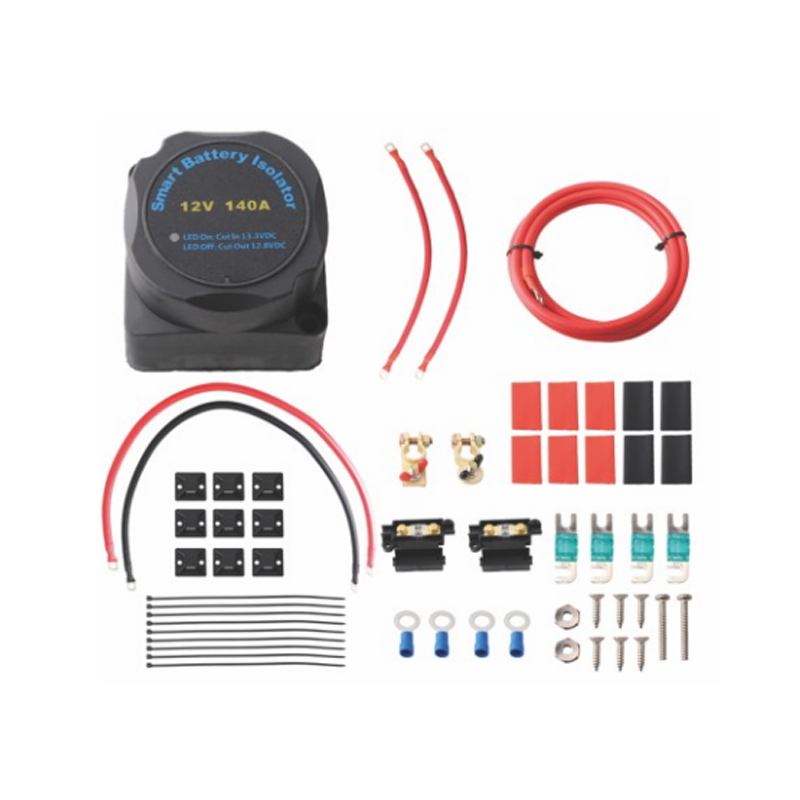- Tel: +86-13385878168
- E-mail: [email protected]
- Please contact us if you have questions.

Web Menu
Product Search

Assessing Whether Simultaneous Connection Using a Dual Battery Isolator Negatively Affects Battery Performance
Understanding the Dual Battery Isolator Functionality
A Dual Battery Isolator is an essential component in systems that utilize more than one battery, such as recreational vehicles, off-road trucks, marine applications, and emergency service vehicles. Its primary role is to enable charging of both the starter battery and the auxiliary battery from a single alternator, while keeping them electrically isolated when necessary. This ensures that one battery can be dedicated to starting the engine while the other powers auxiliary devices. A common question among users is whether the simultaneous connection of two batteries through a Dual Battery Isolator might degrade battery performance over time.

How the Isolator Manages Simultaneous Battery Connection
The core function of a Dual Battery Isolator is to control when and how the two batteries are connected. During engine operation, the alternator produces a charging current, and the isolator engages once the starter battery reaches a specific voltage threshold. At that point, the auxiliary battery is brought into the charging circuit. Once the engine is turned off or the voltage drops, the isolator disconnects the batteries to prevent backflow or discharge between them.
Because the connection is voltage-sensitive and temporary, the batteries are not constantly linked in a way that causes an imbalance. The isolator is designed to prevent one battery from affecting the charge level or stability of the other. As such, the managed connection protects both batteries rather than harming them.
Battery Compatibility and Matching Are Key Factors
Although the isolator itself does not negatively impact performance, issues can arise if the connected batteries are mismatched in type, capacity, or age. For example, pairing a deep-cycle battery with a standard lead-acid starting battery can result in uneven charging behavior if the batteries have different internal resistance or charge acceptance rates. These discrepancies are not caused by the Dual Battery Isolator but can become apparent when the system tries to charge both batteries simultaneously.
For suitable performance, it is recommended to use two batteries of the same type, capacity, and approximate age. When well-matched, the charging process remains balanced, and both batteries receive the appropriate amount of current without stress or degradation.
Preventing Overcharging and Electrical Stress
High-quality Dual Battery Isolators often include built-in protections to prevent overcharging, short-circuiting, or voltage fluctuations. When installed correctly, these devices contribute to battery health by ensuring each battery only receives a charge when safe and necessary. They eliminate the risk of parasitic drain from the auxiliary battery to the main battery when the engine is off and provide reliable operation even under high-load conditions.
Additionally, isolators help avoid deep discharge cycles for the starter battery by keeping auxiliary loads completely separate. This contributes significantly to the starter battery’s longevity and reliability, especially in demanding or long-duration applications.
Real-World Usage and Maintenance Considerations
In real-world scenarios, many vehicle owners have used Dual Battery Isolators for years without noticeable loss in battery performance, provided that installation is done according to manufacturer guidelines and the batteries are monitored periodically. Regular maintenance, such as checking for corrosion, monitoring voltage levels, and ensuring tight electrical connections, further prevents performance issues.
It's also important to note that the isolator does not act as a voltage regulator or charger. It merely controls the flow of current, so the overall charging quality still depends on the alternator’s health and output capacity.
Proper Use Ensures Safe Battery Performance
A Dual Battery Isolator does not inherently cause negative effects on battery performance. Instead, it serves to protect each battery from unwanted discharge or imbalance. When used with compatible batteries and maintained properly, the isolator supports safe, efficient energy distribution. Thus, simultaneous connection through a Dual Battery Isolator is not only safe but also beneficial for preserving battery performance in dual battery systems.
Related Products
Request for a call today
-
-
Romy
-
Phone: +86-13385878168
-
WhatsApp: +8613385878168
-
Email: [email protected]
-
-
-
Clark
-
Phone: +86-15397359100
-
Email: [email protected]
-
-
-
Pinky
-
Phone: +86-15305875100
-
Email: [email protected]
-
- Mobile Terminal


 English
English Español
Español













